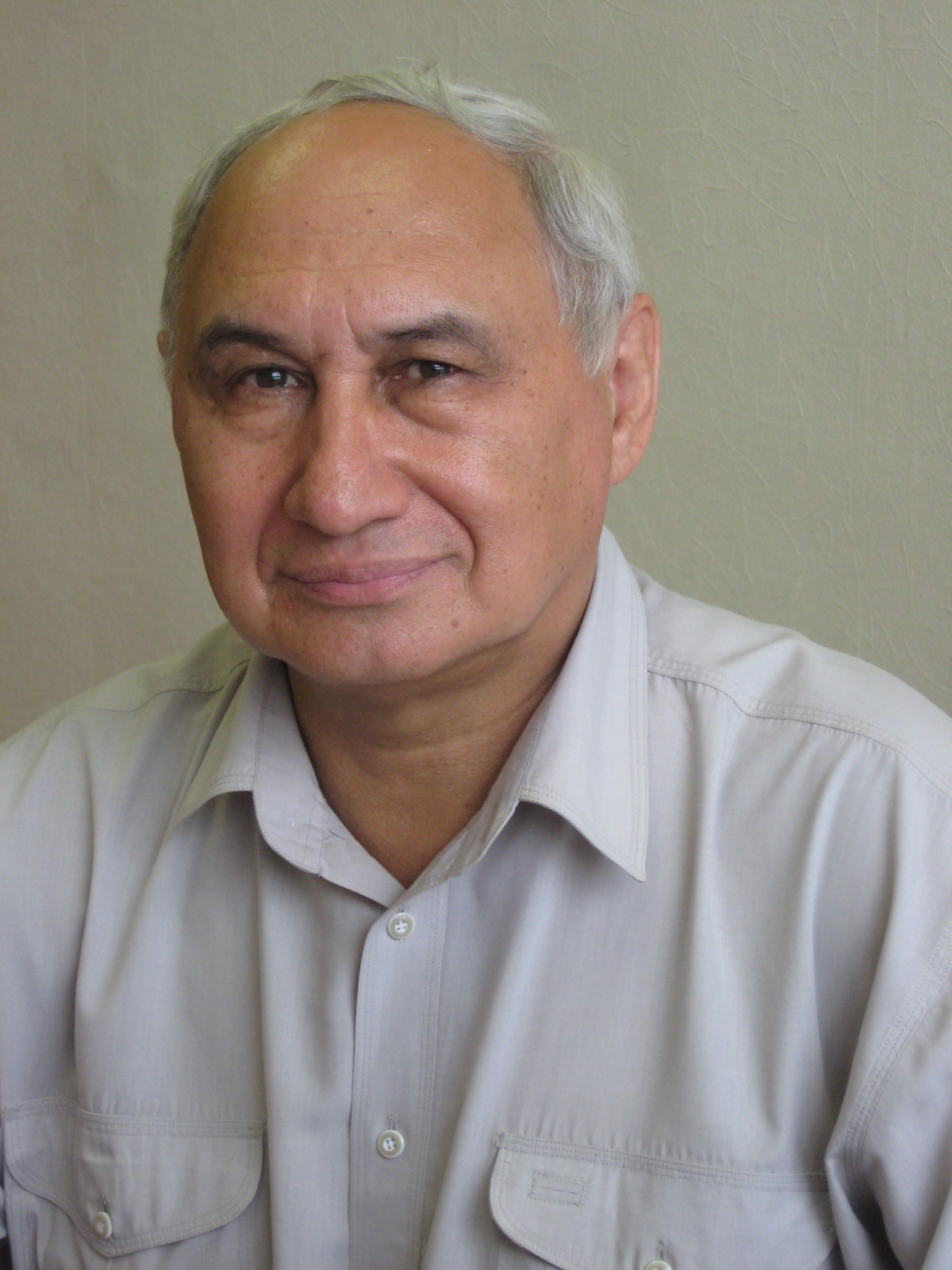- Magnetoelectric effect, multiferroics, composites, sensors
Basic Information

(Mar 1940–)
Location: Krasnojarsk, Siberia
Mirza Bichurin is Professor and Head of the Department of Design and Technology of Radioelectronic Equipment, Yaroslav-the Wise Novgorod State University, Russia. He has authored 6 books and more than 160 articles in international refereed journals and holds credit for 20 patents. His most famous works:
1.“Magnetoelectricity in Composites.” Eds. M. I. Bichurin and D. Viehland, Pan Stanford Publshing, Singapore, 2012, 286p.
- I. Bichurin, V.M. Petrov, R.V. Petrov, A.S. Tatarenko, “Magnetoelectric Composites”, Pan Stanford Publishing Pte. Ltd.: Singapore, 2019, 280p.
- Bichurin, V. Petrov. “Modeling of Magnetoelectric Effects in Composites,” Springer Series in Materials Science 201,2014, 108p.
- -W. Nan, M.I. Bichurin, S. Dong, D. Viehland, G. Srinivasan, "Multiferroic magnetoelectric composites: historical perspectives, status, and future directions” J. Appl. Phys., 103, 031101 (2008).
He is a Honoured worker of Higher School of Russia and Honoured worker of Science of Russia. Besides, he is a well-known expert of magnetic and electric properties of composites, multilaeer and bulk magnetoelectric structures, and microwave electronics.
At present, magnetoelectric (ME) composites are extensively studied. Researchers pay main attention to layered composites because of the possibility of obtaining the maximum ME effect on their basis. Because of the content of magnetic and electrical (piezoelectric or
ferroelectric) components in its structure, the ME composite is a multifunctional material and considerably interests developers of ME devices compared to conventional magnetic and electrical materials. The presence of a magnetic component makes it possible to change the magnetic properties of the composite by applying an external electric field, and the electrical properties change when exposed to an external magnetic field. Depending on the external applied fields in the ME composites, the direct and inverse ME effects are distinguished. In the
case of the direct effect, electric polarization is induced in the composite when it is exposed to a magnetic field, whereas, in the case of an inverse effect, magnetization occurs when exposed to an electric field. The main characteristic of the ME composite in the case of a direct effect is
the ME voltage coefficient, which is the ratio of the induced electric field to the alternating magnetic field acting on the composite. There are numerous works devoted to the calculation of individual characteristics of ME composites and examples of the development of
various ME devices: sensors, gyrators, harvesters, antennas, and microwave devices. The information in the literature concerns the calculations of the ME effect for individual electromechanical (EMR) regimes, then further in the article we will carry the comparison of the obtained theoretical results with these data out. As an example of a developed perspective ME device, we can discuss the ME magnetic field sensor. The great interest in this device is because, having a simple three-layer Metglas- PMN-PT-Metglas structure, in the near future it can replace a complex electronic device such as a SQUID operating at helium temperature, since comparable values for giant ME voltage coefficient of 4.26 _ 104 V cm1 Oe1 and the equivalent magnetic noise of 2.89 fT Hz1/2 at EMR frequency on this structure have already been achieved. If we consider its small weight and size parameters and operation at room temperature, then we can expect widespread use of the ME magnetic field sensor in areas such as biomedicine. Next, we should briefly emphasize the main characteristics of other new ME devices, in which they can compete with well-known serial devices. For ME gyrators, which are developed for the purpose of
possible replacement of current and voltage transformers, the efficiency of field conversion at the level of 90% has already been obtained. ME harvesters, unlike mechanical/vibrating and piezoelectric counterparts, allow using all types of energy in the collection: mechanical, piezoelectric, magnetic, and electromagnetic, including microwave. So far, it has received of 18,700 mW/m3 by the join application of an AC magnetic field and mechanical vibrations. Wide-range ME antennas, operating on the principle of acoustoelectronic conversion, can significantly reduce the weight and size parameters and radiation power, which is very important for their possible use in underground and underwater communications. New ME control devices in the microwave range, such as filters, attenuator-isolators, and phase shifters, unlike ferrite analogs, have dual control of their parameters by the magnetic and electric fields, which makes it possible to increase their speed and manufacturability.
